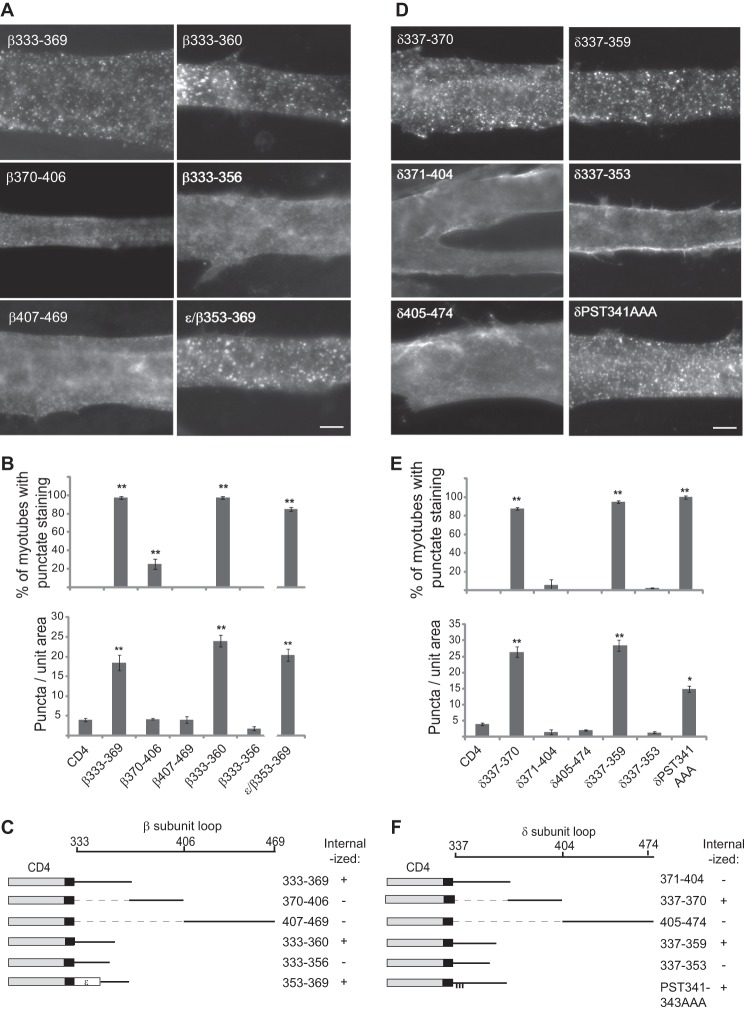FIGURE 4.
Internalization is mediated by signals in the proximal β and δ loops. A, C2 myotubes transfected with CD4-β loop deletion constructs were surface-labeled with anti-CD4 antibody and incubated at 37 °C for 15 min. Proximal β loop fragments containing amino acids 333–360 were rapidly endocytosed, whereas more C-terminal segments of the loop were not. Further truncations (β(333–356)) blocked endocytosis, and substitution of β(353–369) into the analogous position in the ϵ loop conferred internalization. Scale bar, 10 μm. B, quantification of the percentage of transfected myotubes with punctate immunostaining (top) and the number of puncta per unit area of myotube (bottom) (**, p < 0.01, compared with CD4 control or CD4-β(370–406), β(407–469), and β(333–356); ANOVA with Tukey's post hoc test, n = 3–5 experiments for each construct). Error bars, S.E. These experiments identify β loop amino acids 333–360 as the minimal sequence sufficient for endocytosis. C, schematic of β loop and summary of the experiments mapping the internalization signal. D, analogous experiments with CD4-δ loop. Fragments containing amino acids 337–359 were rapidly internalized, whereas more C-terminal segments of the loop were not. Further truncation to δ(337–353) abolished endocytosis. E and F, quantification (E) and summary (F) identifying δ loop amino acids 337–359 as the minimal sequence sufficient for internalization from the plasma membrane.

